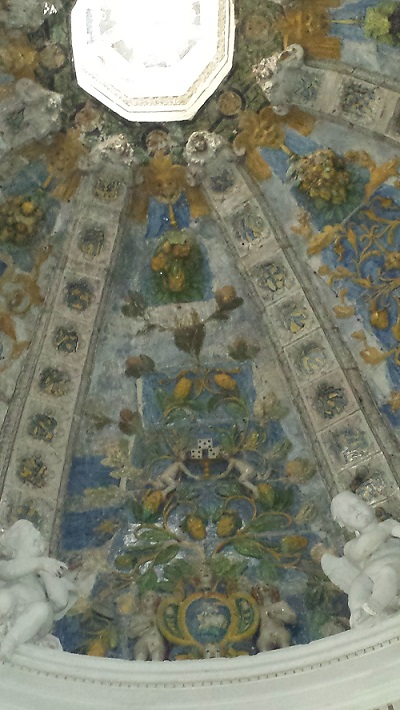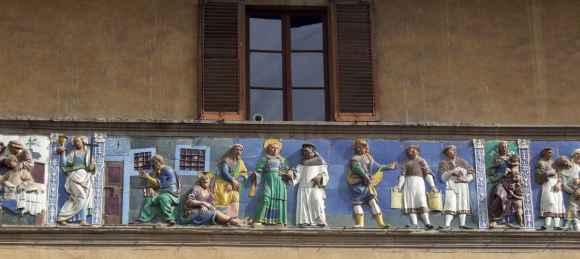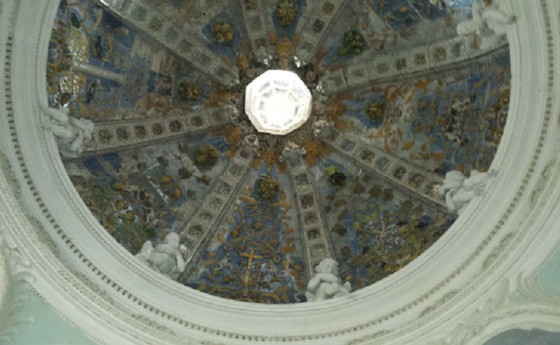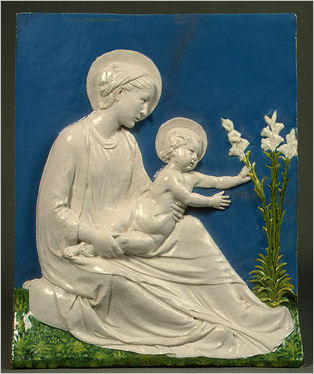The most beautiful things are the unexpected ones.
Last Sunday we decided for a trip to Bevagna (Umbria): a bit of sightseeing and some good food & wine to recharge the batteries after a busy week.
Bevagna is a small village not far from Perugia, with awesome buildings from the Middle Ages and the Renaissance, cobbled streets and peoples filling the main square after Sunday mass.
Strolling around, we stepped into Saint Frances Church and we found a jewel: a glazed terracotta dome made by Santi Buglioni.
We took some pictures with the mobile phone and, despite the poor light, we believe they manage to convey the beauty of this work that is, we were to discover, not very well known.

The author of the dome, Santi Buglioni, is an Italian sculptor who lived and worked in Florence in the 16th century, when glazed terracotta was a very popular decorative technique, thanks to the talents of the Della Robbia family.
Santi inherited the secrets of this technique and actually worked with Giovanni Della Robbia in the Ospedale del Ceppo, in Pistoia, one of his most famous works, where he sculpted the frieze that runs along the entire length of the loggia of the hospital, representing the Seven Acts of Mercy.

Santi Buglioni, detail of the frieze on the Loggia of the Ospedale del Ceppo, Pistoia – Credits “The red list” website
He was mostly active in Florence, where his glazed terracotta stille decorates the Biblioteca Laurenziana, Palazzo Vecchio and the Bargello.
By Tiziana Manzetti


